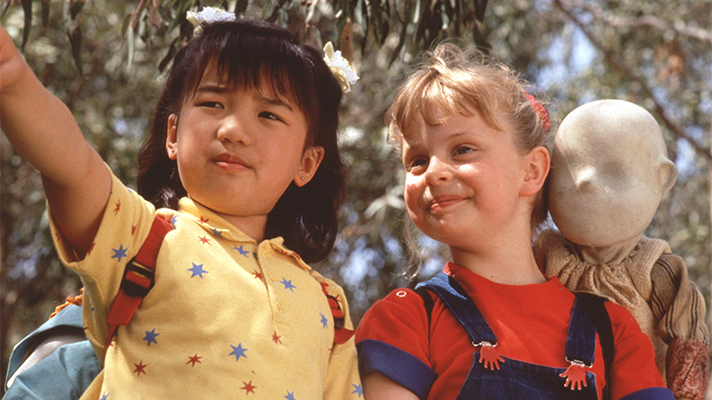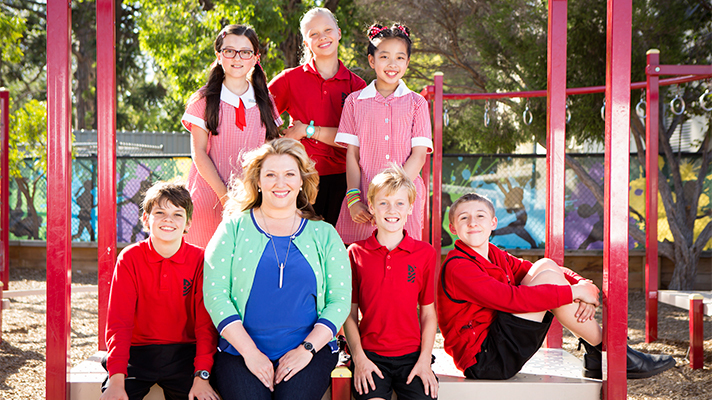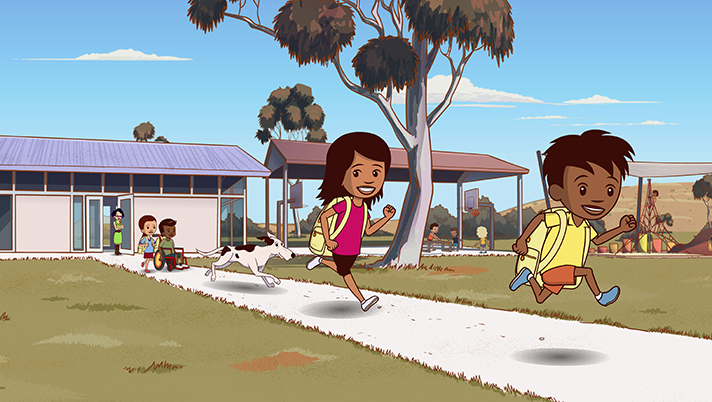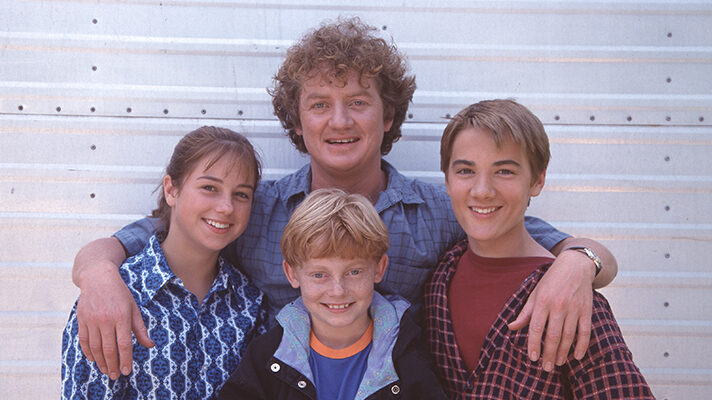Have you ever, ever felt like our kids are being swept away by foreign content?
Jenny Buckland
12 Dec 2023
Originally published in The Age.
A few weeks ago, a simple poster on a Brisbane building asking readers whether they had ever, ever felt like this, stirred memories for an entire generation of Australian children.
The iconic kids’ series Round the Twist is so beloved and its theme song so embedded in hearts and minds that an entire musical has been composed around it. When Queensland Theatre announced that the musical would premiere as part of its 2024 season – more than a year away – fans of the series as far away as London began enquiring about tickets.
Children’s television serves a purpose that goes far beyond simple entertainment. The TV we watch as kids has a profound impact, right at the time when we are developing our identity. The stories, characters and worlds that we inhabit as young viewers become a part of who we are, inextricably tied to core memories, as the Round the Twist news reminded us.
It’s the memory of running home from school to make sure we didn’t miss a moment of our favourite show, of huddling on the couch with our siblings, of fighting over the remote control and cold glasses of Milo. Those memories invoke the feelings of joy, wonder and freedom of being a child.

A study by researchers at Swinburne University and RMIT Melbourne launched in October, found that the cultural impacts of Australian children’s television last for decades. For nine out of 10 survey respondents, a number of their favourite shows growing up were Australian made, and the most memorable local kids’ shows were described as “cheeky” or “edgy”, with depictions of relatable Australian life.
The research also found that seven out of 10 respondents have revisited their Australian childhood favourites in recent years. Children’s television can be the ultimate comfort viewing, transporting us back to that couch after school, where characters feel like friends. In a world full of conflict, division and misinformation, it is vital that children have access to Australian content made specifically for them that makes them feel seen and gives them an anchor in stormy seas. We only need to look at the astronomical success of Bluey to see the power of children’s television made for Australians kids by Australians.
The screen industry, both in Australia and around the world, is in a state of rapid transition and increased competition. Old models of funding and regulation, as well as audience viewing habits, are being turned on their head. We are consuming content at higher rates than ever thanks to streaming services and online platforms like YouTube, with audiences fragmenting on account of all that choice. No longer do we race home from school to avoid missing the start of an episode or scramble to fix a bowl of cereal before the Saturday morning cartoons start – we now have TV on demand on numerous devices with easy access to content from right around the world. This leaves Australian children’s screen content especially vulnerable within the broader environment.

When Australian children see their lives reflected on screen, they experience recognition, affirmation, and gain positive role models; the characters and stories help them to imagine all the possibilities for someone who looks and sounds like them.
But our nation’s kids are not a homogenous group. We need an array of Australian stories from different storytellers around our country, reflecting the full diversity of children and their lives, on all the platforms children turn to for entertainment. The stories we watch influence how we think about others, as well as how we think about ourselves. They provide children with an opportunity to try on someone else’s shoes and consider what it’s like to be them. Australian children’s television is building empathy, kindness, social cohesion and shared values.

Through development and production funding, the Australian Children’s Television Foundation invests in live-action, animated and factual content from storytellers of different backgrounds from all over Australia. Projects that received production funding over the past two years have been filmed right across the country, from Western Australia’s Ningaloo Reef to remote communities in the Northern Territory’s Arnhem Land, extreme environments deep in the Queensland wilderness, a purpose-built theme park in the suburbs of Melbourne and even our national Parliament House.
The recent research demonstrates how what we watch when we’re young has a lifelong impact, shaping our experience of Australian culture and connecting us with our community and peers.
The Commonwealth Government is currently considering Australian content expenditure obligations for streaming services and making free-to-air TV channels more visible on smart TVs via a prominence framework. Ensuring that Australian children’s screen content is specifically supported and promoted in these new regulatory measures and continuing to invest in Australian children’s content is vital. Those wonderful shows Australians remember from the 1990s and 2000s were all supported by public policies. We need to protect homegrown content in a rapidly changing landscape to make sure children today have the same opportunities to grow up with Australian shows.


Comments
Comments for this post are open.